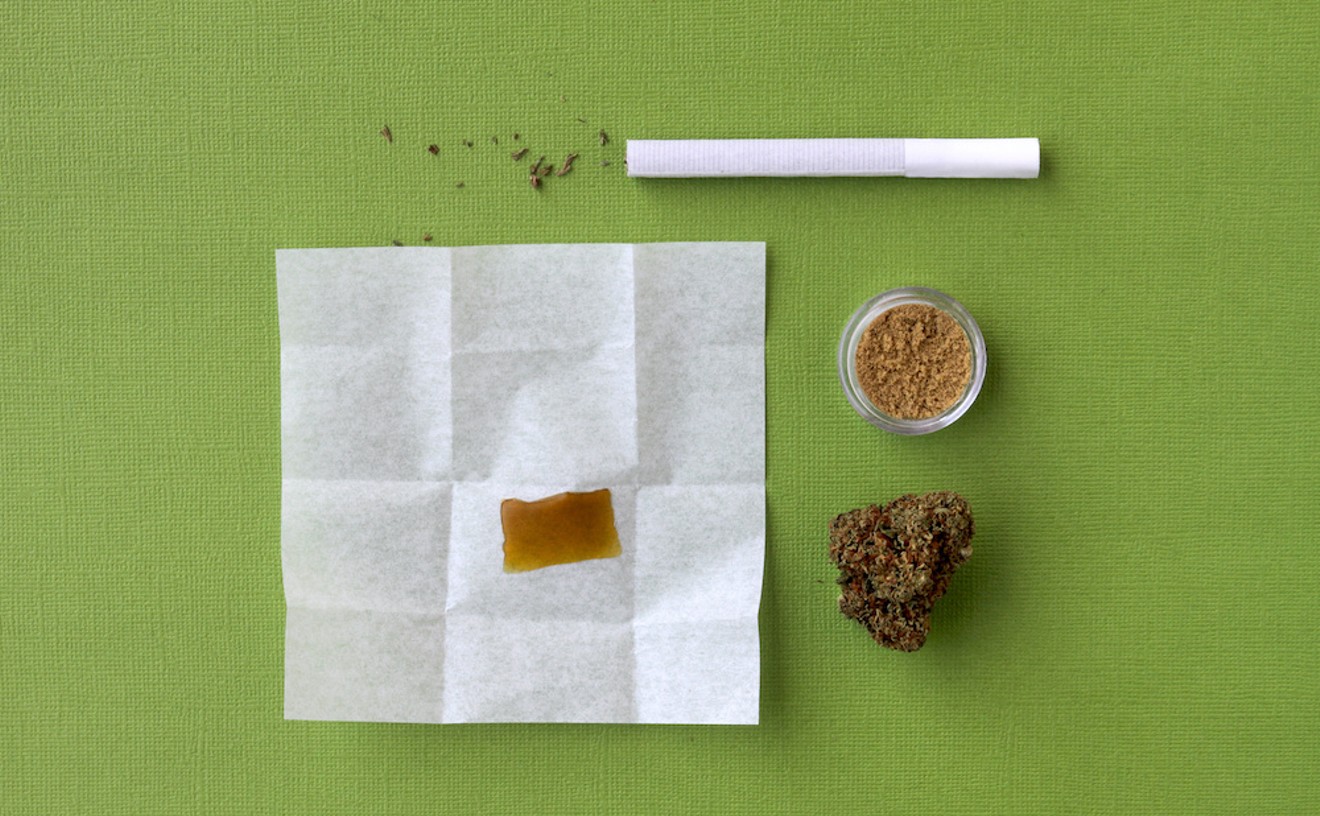The vast variety of products offered by legal cannabis dispensaries can be intimidating, especially if your prior pot purchases mostly involved plastic baggies of anonymous green pencil shavings. Here’s a beginner’s guide to buying above-board bud.
THC, CBD, COA, WTF?
No matter the delivery method, virtually every medical marijuana product will be labeled with its genetic strain and potency. Broadly speaking, cannabis strains in the sativa family are said to have energizing, head-focused effects that get you “high,” while indica strains target the body and make you feel “stoned,” with hybrid strains splitting the difference. But to really understand what you’re inhaling, ask your dispensary’s “budtender” to show you the Certificate of Analysis (COA), which will reveal the percentages of THC — tetrahydrocannabinol, marijuana’s signature psychoactive ingredient — as well as non-psychoactive cannabidiol (CBD) and related beneficial cannabinoids. Smart patients know not to merely chase high THC numbers, but instead search out their favorite terpenes like myrcene and linalool, which not only provide flavor but enhance the plant’s medicinal properties via an “entourage effect.”
FLOWER
Flower is the medical term for good old-fashioned weed, although even the least expensive legal bud is light-years beyond whatever your Boomer ancestors were puff-puff-passing at Woodstock. THC percentages range from under 10 percent to over 30 percent, with quality herb averaging about $50 for an eighth of an ounce (3.5 grams). Some dispensaries price their flower in tiers according to bud size, and you can frequently find “minis” or “littles” with the same potency as whole flower at a cheaper price. Pre-ground flower is available intermittently for as little as a quarter of the regular price, and swiftly sells out; it’s perfect for cooking (see below) or vaporizing, if you want to protect your lungs from combusted plant carbon try investing in a handheld dry-herb vape.
EDIBLES
The next most common method of consuming cannabis is by ingestion, usually in gummies, chocolates or pastries.
It’s more accessible than flower for non-smokers and lasts hours longer, making it more discreet when outside your home. Unfortunately, not all dispensaries offer edibles, and those that do in Orlando charge excessive prices; a 10-pack of gummies containing 10 milligrams each of THC costs at least $25, while a half-gram pre-rolled joint with a similar total THC content can be purchased for less than half that. And before you just toss a baggie of shake into a brownie mix, remember that marijuana requires decarboxylation by carefully controlled heating before oral consumption, plus fats for the liver to metabolize. It’s a whole lot easier and cheaper to squirt a rice grain–sized drop of distillate or RSO on a spoonful of peanut butter, which brings us to …
EXTRACTS & CONCENTRATES
A newer but increasingly popular way to medicate with marijuana is with oils, waxes and other viscous substances extracted from the cannabis plant. The cheapest and most available are distillates, which use ethanol or CO2 to transform the plant’s THC molecules into a pure clear liquid, leaving all other components behind. Terpenes derived from either cannabis or other mystery “botanical” sources are reintroduced to re-create the original strain’s flavor profile, or to emulate other appealing flavors. Distillates pack a punch, with up to 90 percent-plus THC potency — some can be tasty, but others are the pot equivalent of drinking Everclear with Kool-Aid, creating intense but unpleasantly unbalanced effects. Instead, look for slightly pricier products like live rosin or similar solventless full-spectrum extracts, which use temperature and pressure to preserve more of the plant’s original cannabinoid profile (think single-malt Scotch).
Distillates and extracts can be purchased (for $35-$60 per half-gram) in vaporization cartridges compatible with standard 510-thread batteries or other proprietary inhalation devices, which all allow precise dosing by the second without any wasted product; be sure to use on the lowest possible temperature setting. They’re also available in syringes that can be used orally or topically, as is Rick Simpson Oil (RSO) a powerful extract that can be eaten but not inhaled. Finally, there’s a whole world of wax, shatter, crumble, and other high-potency concentrates that requires specialized dab rigs to consume; I’d suggest beginners leave those alone until ready for the advanced class.

